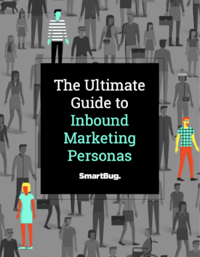
How Negative Buyer Personas Can Shape Your Ideal Personas
October 9, 2017
By Trenton Reed

We’ve all experienced that type of prospect. The special type of person who clicks around your website, reads your content, and even comments on your blog posts—with no apparent intent of making a purchase. Naturally, however, you spend the time and money to chase the prospect, right?
Let’s be blunt. Unfortunately, there are leads who will never buy your products or services. Ever. And if they do, not only did they cost an exorbitant amount of money to acquire, they have a greater chance of churning and are unlikely to purchase more than once. They’re also generally finicky. Some may complain about everything. Others may berate your customer support team. These prospects leave your team frustrated and exhausted—and take a toll on your resources (and sanity).
As you know, sales and marketing resources are finite. In other words, no amount of money justifies these customers. Any marketer worth their salt knows that buyer personas can help teams understand their audience and reduce these costly interactions. However, it’s equally essential to bolster your strategy with negative personas.
Why should negative buyer personas be treated the same way as traditional ones—and introduced in any inbound marketing program? This article explains the importance of negative buyer personas and how to introduce them across your organization.
Traditional vs. Negative Personas
Persona development is paramount to the success of an inbound marketing program, no matter the size or scope of your business. Traditional personas embody the type of customer that gives you the most revenue, with the least opposition, over the longest period of time. Buyer personas tell you important information about your target customer including:
- Daily activities
- Frequent challenges or pain points
- Why certain purchasing decisions are made
- Questions they frequently ask
- What might make their life easier
Buyer personas help teams allocate resources, attract leads, and understand what drives people to make purchases. They’re the type of customer that reminds you why you got into marketing or sales in the first place.
So, if buyer personas represent your target customer, then negative personas are pretty much the exact opposite—and hold just as much sway.
Negative personas save organizations time and money by identifying archetypes of who you don’t want to sell and market to. Negative personas enable teams to segment out the bad apples by proactively identifying which types of prospects are a potential drain on resources. Identifying negative personas gives teams a reason to cut ties with prospects.
It’s time to elevate your standards and work with the right prospects. To help identify the best personas, it’s essential to weed out the ones who won’t work with you in the first place. Luckily, if you’ve created traditional buyer personas, you’ve set the foundation for creating negative ones. Let’s review.
1. Talk with Your Team
The first step in building negative personas is hosting a kickoff meeting with your sales and marketing departments to ensure that everyone on the same page. Each department can bring something to the table. While sales will have insights into which factors influence a prospect, marketing can provide important inbound marketing analytics, including:
- Ineffective lead-generation tactics
- Which pages prospects leave
- Which prospects abandon a shopping cart
- Where customers are located
Consulting your internal team can help outline customer pain points, goals, and common behaviors before you even talk to them.
2. Talk to Current Customers
After gathering information from your internal teams, it’s important to validate your assumptions with customer interviews. Talk to customers who have stopped working with you. Interface with prospective customers who have never heard of you. As with traditional personas, it’s important to keep things open-ended. These questions are more likely to generate valuable information and can be used to tailor the behavior of your negative personas.
Leverage Data
Interviewing and surveying customers is also a great way to collect data. For example, you can survey customers with low average sales prices. Or, you can speak to customers with low satisfaction scores. Finally, consider talking to those who love your brand—those who download content and click through your emails—but have never converted into a customer. This can help identify industry and market trends.
3. Build Your Persona Profile
You’ve interviewed customers and prospects. You’ve analyzed data and identified trends. Now is the time to get down to the nitty-gritty and build out your negative personas.
Start by filling in basic demographic information, including your personas’ background, demographics, and identifiers. Like traditional personas, include both demographics and a narrative of the customer’s behavior. This should include a description of daily life, challenges, purchasing behavior, and other factors that you’ve gathered from interviews and previous interactions.
Identifiers, which include demeanor and behavior, can help sales teams immediately recognize red flags. And indicators such as real quotes and common objections help teams identify during phone calls or other interactions. The goal here is to outline less-than-perfect customer behaviors and trends so that your reps can respond quickly when they encounter a Frustrating Frank or Dogged Denise.
Successfully segmenting negative personas can result in a lower cost per lead and cost per customer, resulting in higher sales productivity. Thus, it becomes clear why negative personas should be treated the same way as traditional ones—and introduced into any successful inbound marketing program.
Do you have any additional suggestions on implementing negative personas? Let us know by tweeting at us at @smartbugmedia.

About the author
Trenton Reed was formerly a copywriter for SmartBug. He was written for various publications, agencies, and companies and has worked to develop and grow B2B and B2C brands of all sizes. Read more articles by Trenton Reed.










